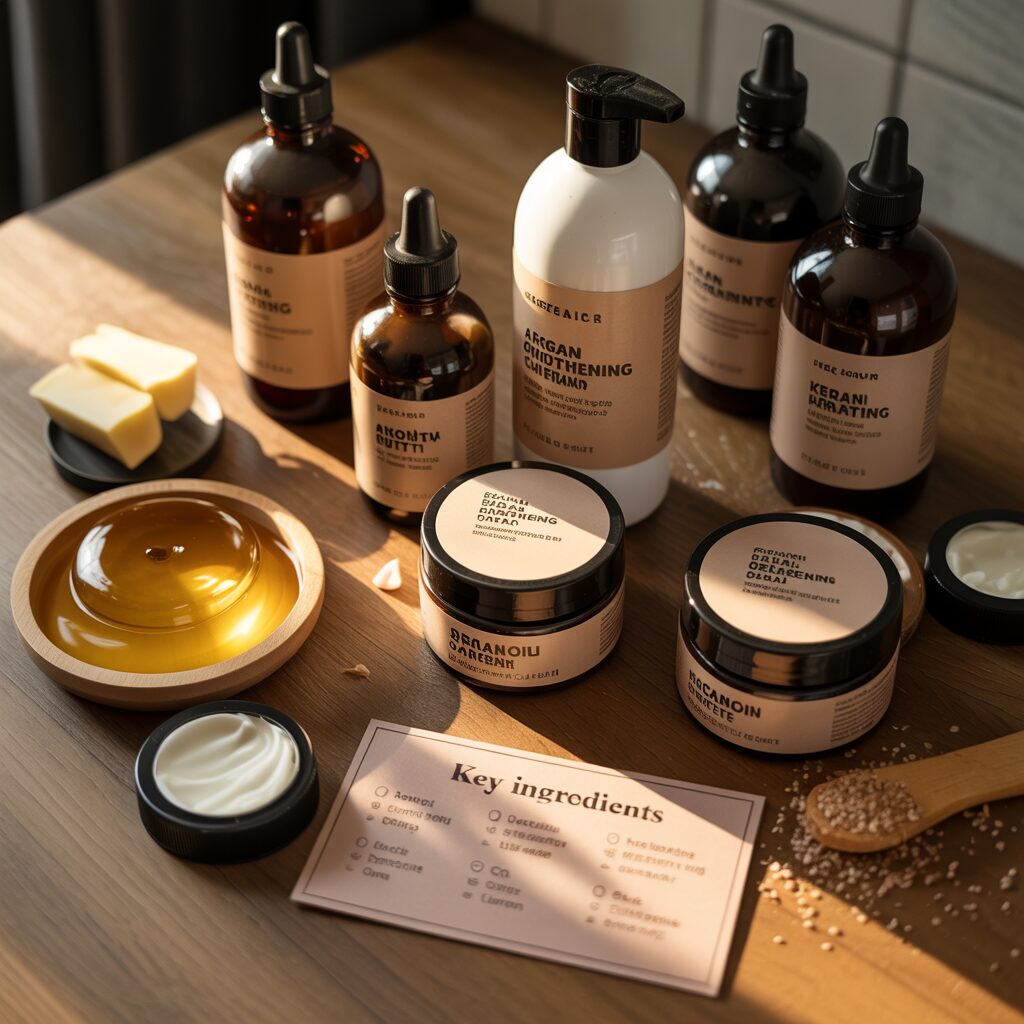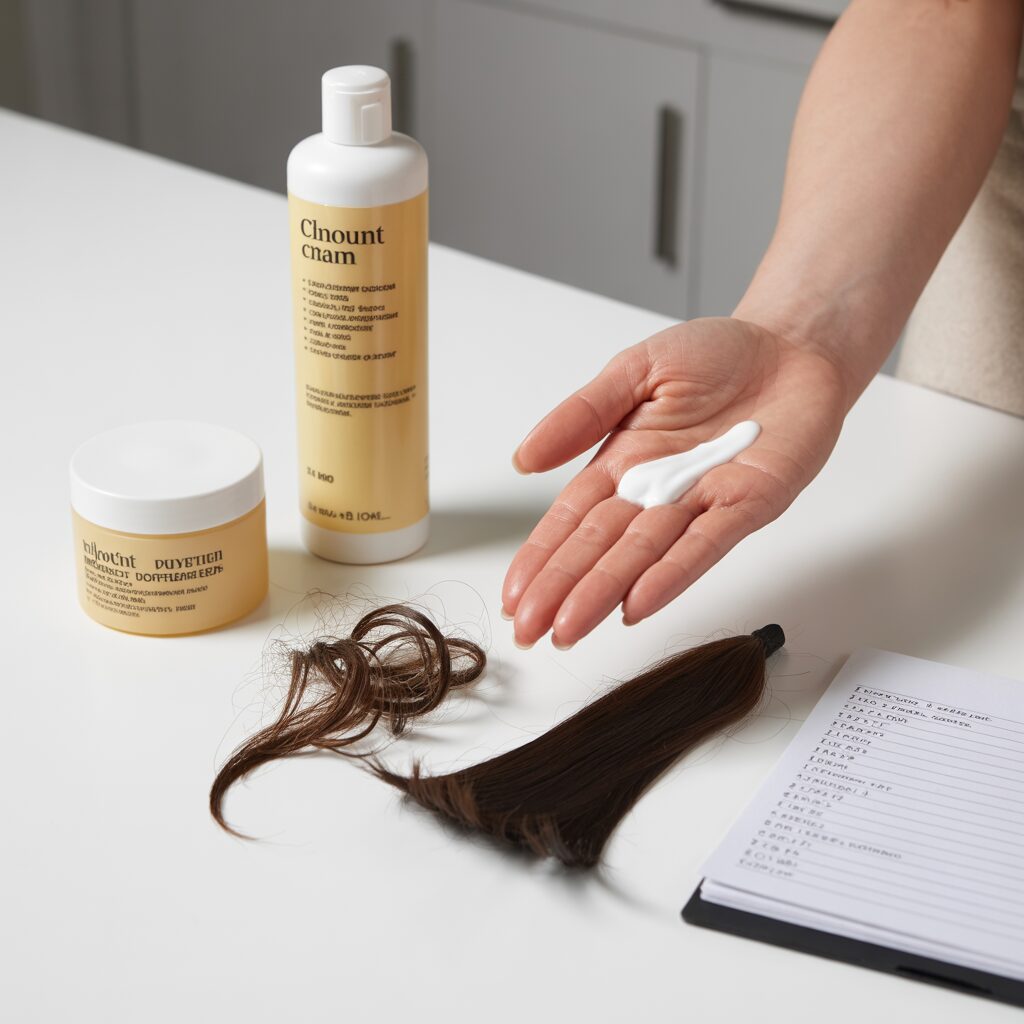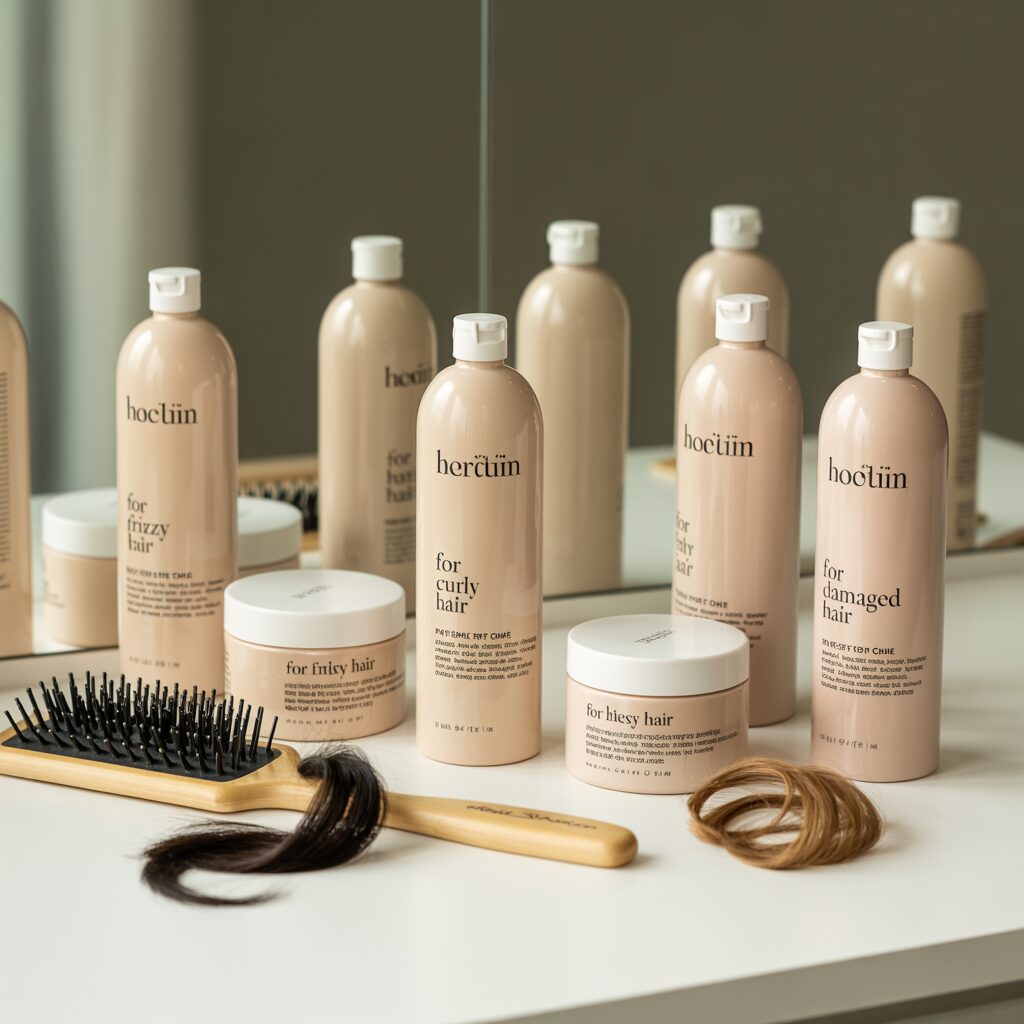Ever spend two hours straightening your hair only to step outside and poof – hello frizz, my old friend? Yeah, that’s what happens when you pick the wrong hair smoothening cream for your hair type.
Finding the perfect smoothening cream isn’t just about grabbing whatever has “smooth” on the label. It’s about understanding what your specific hair texture actually needs.
Whether you’re battling humidity-induced frizz or trying to tame those rebellious curls, the right hair smoothening cream can be the difference between “I woke up like this” and “I gave up trying.”
But here’s what most stylists won’t tell you about these creams until you’ve already wasted your money…
Understanding Hair Types and Their Needs

Identifying Your Hair Type (Straight, Wavy, Curly, Coily)
Ever looked at someone’s gorgeous hair and wondered why your products don’t give you the same results? That’s because hair isn’t one-size-fits-all. Your unique hair type needs specific care.
Straight hair (Type 1) is typically oily, reflects light well, and can fall flat. It ranges from fine, thin strands to thick, coarse textures.
Wavy hair (Type 2) sits between straight and curly with S-shaped waves. It often battles frizz and can lose definition in humidity.
Curly hair (Type 3) forms springy, defined loops and needs serious moisture. Without it, you’re dealing with frizz city and shrinkage that hides your true length.
Coily hair (Type 4) creates tight curls or zigzag patterns. It’s the driest type because natural oils struggle to travel down the hair shaft.
Not sure? Check your hair when it’s product-free and air-dried. Look at how it falls and forms patterns naturally.
Common Hair Problems That Smoothening Creams Address
The struggle is real when it comes to unruly hair. Here’s what smoothening creams tackle:
Frizz – Those annoying flyaways that make your hair look like you stuck your finger in an electrical socket.
Dryness – When your hair feels like straw and breaks at the slightest touch.
Unmanageable volume – Hair that seems to have its own zip code.
Lack of shine – Dull hair that just won’t catch the light no matter what.
Rough texture – When running fingers through your hair feels like navigating a obstacle course.
Heat damage – The aftermath of your relationship with straighteners and blow dryers.
Inconsistent curl pattern – Some parts wavy, some curly, some straight—basically hair identity crisis.
How Different Hair Textures Respond to Smoothening Products
Your hair type dramatically affects how smoothening products work. Here’s the breakdown:
Straight hair often gets weighed down easily. Lightweight smoothening creams work best, giving shine without the grease. Results show quickly but might not last as long.
Wavy hair is the sweet spot for most smoothening products. They define waves while taming frizz. You’ll notice smoother texture without losing that natural movement.
Curly hair drinks up smoothening products but needs higher concentration of moisturizing ingredients. The right cream defines curls while making them more manageable. Results take longer but typically last days.
Coily hair requires the heaviest formulations with deep moisturizers and oils. Smoothening creams won’t straighten coily hair but can significantly reduce shrinkage and improve manageability when used consistently.
Remember that porosity matters too. High-porosity hair absorbs products quickly but might need more product, while low-porosity hair needs lighter formulations that won’t just sit on top.
Key Ingredients to Look For in Hair Smoothening Creams

A. Moisturizing Agents (Shea Butter, Argan Oil, Coconut Oil)
Looking for that perfect smoothening cream? The secret’s in the moisture.
Shea butter is basically hair’s best friend – it’s packed with vitamins A and E that soak right into your strands without weighing them down. What I love about shea is how it tames frizz even in crazy humidity.
Argan oil (yeah, the “liquid gold” everyone raves about) actually deserves the hype. It’s lightweight but powerful, pumping your hair full of fatty acids and vitamin E. Just a tiny bit mixed into your smoothening cream can transform brittle hair into silk.
Coconut oil is the OG moisture magnet. It doesn’t just sit on top of your hair – it actually penetrates the shaft to hydrate from within. Perfect if your hair drinks up moisture faster than you can apply it.
B. Protein-Based Ingredients for Strength and Repair
Your damaged hair is literally crying out for protein. No joke.
Keratin tops the list because it’s what your hair is made of naturally. Smoothening creams with keratin fill in those damaged spots along your hair shaft, making everything smoother and stronger.
Silk proteins create this invisible shield around each strand – they’re smaller than other proteins so they can get where they need to go. They’re amazing for fine hair that breaks easily.
Wheat and rice proteins? Game changers for elasticity. They help your hair stretch without snapping, which means fewer broken ends when you style.
C. Silicones: Pros and Cons for Different Hair Types
Silicones are that controversial ingredient everyone has opinions about.
The pros? Instant smoothness. Dimethicone creates that glass-hair effect by coating each strand, sealing in moisture and blocking humidity. It makes detangling a breeze and heat styling actually doable without frying your hair.
But here’s the catch – they build up over time. For fine hair, this spells disaster: flatness, weighed-down locks that look greasy by day two.
Curly hair people have a love-hate relationship with silicones. They control frizz like nothing else, but can also block the intense moisture curls need.
If you go the silicone route, look for water-soluble ones like cyclomethicone that wash away easily. Or alternate with clarifying treatments to keep build-up in check.
D. Natural vs. Chemical Smoothening Ingredients
The natural vs. chemical debate isn’t as simple as “natural good, chemical bad.”
Natural smootheners like aloe vera, flaxseed, and honey work through hydration rather than permanently altering your hair structure. They’re gentle but temporary – perfect if you’re dealing with mild frizz or just want healthier-looking hair.
Chemical smootheners containing formaldehyde, ammonium thioglycolate, or sodium hydroxide deliver dramatic, long-lasting results by actually changing your hair’s structure. The transformation is real, but so is the potential damage.
Middle-ground options exist too. Glyoxylic acid and cysteine treatments are considered “semi-permanent” and less damaging than traditional relaxers while offering more staying power than purely natural options.
Your hair type matters here – fine, already-processed hair might not handle harsh chemicals well, while thick, resistant hair might need something stronger than aloe to see results.
Evaluating Smoothening Cream Formulations

A. Light vs. Heavy Creams: Which Works Better for You
Ever noticed how some hair creams weigh your locks down while others seem to disappear? That’s the classic light vs. heavy cream showdown.
Light creams are your go-to for fine or thin hair. They smooth without the dreaded flatness that makes you look like you haven’t washed your hair in days. They typically contain silicones that coat the hair shaft without adding weight.
Heavy creams? They’re the powerhouses for thick, coarse, or super curly hair that needs serious taming. These bad boys contain more oils and butters that penetrate deeply and provide long-lasting smoothness.
Here’s a quick breakdown:
| Hair Type | Best Cream Weight | Benefits |
|---|---|---|
| Fine/Thin | Light | Smooths without flattening |
| Medium | Light to Medium | Balances smoothness with body |
| Thick/Coarse | Heavy | Provides serious frizz control |
| Curly | Medium to Heavy | Defines curls while smoothing |
B. Heat-Activated vs. Leave-In Formulations
Heat-activated smoothening creams are like that friend who only shows up when things get hot. They contain polymers that activate when heat is applied, creating a protective barrier while smoothing the cuticle.
Leave-in formulations work their magic over time without needing the blow dryer pep talk. They’re perfect for air-drying enthusiasts or those looking to minimize heat damage.
The real question isn’t which is better—it’s which matches your styling routine. If you’re a daily blow-dryer or flat iron user, heat-activated formulas give you better protection and longer-lasting results. But if you’re more of a wash-and-go person, leave-ins will be your hair’s best friend.
C. Anti-Frizz vs. Deep Conditioning Properties
Think of anti-frizz formulations as bouncers for your hair—they keep humidity and environmental aggressors from crashing your good hair day. They typically work by creating a barrier around the hair shaft that blocks moisture from entering.
Deep conditioning smoothening creams, on the other hand, are more like therapists for your strands. They work from within, repairing damage and improving hair health over time. These formulas often contain proteins, keratin, and nourishing oils that strengthen hair structure.
Many people make the mistake of thinking they need to choose one or the other. The truth? Your hair probably needs both properties—just in different proportions depending on your hair’s condition.
If your hair is damaged but relatively smooth, prioritize deep conditioning. If your hair is healthy but frizzy, go heavy on the anti-frizz properties. And if you’re dealing with both issues (aren’t we all?), look for hybrid formulas that tackle both concerns.
Top Smoothening Creams for Specific Hair Concerns

Best Options for Extremely Frizzy Hair
Dealing with extremely frizzy hair can make you want to hide under a hat forever. But don’t worry—there are smoothening creams specifically designed to tame those rebellious strands.
Kerastase Discipline Smoothing Treatment tops the list for its intensive moisture-locking formula. It contains morpho-keratin complex that penetrates deep into hair fibers, creating a protective shield against humidity.
Moroccanoil Smoothing Lotion works wonders too. What makes it special? It combines argan oil with vitamin E to smooth cuticles without making hair feel greasy or heavy.
For budget-conscious folks, John Frieda Frizz Ease Extra Strength Serum delivers impressive results at half the price. Apply it to damp hair, and watch the magic happen as it dries.
Solutions for Damaged or Over-Processed Hair
Over-processed hair needs extra TLC. Your smoothening cream should repair, not just smooth.
Olaplex No.6 Bond Smoother isn’t just another cream—it’s a miracle worker. It reconnects broken hair bonds caused by chemical treatments while reducing frizz for up to 72 hours.
Briogeo Farewell Frizz Rosarco Milk Leave-In Conditioning Spray combines rosehip, argan, and coconut oils to restore elasticity to damaged strands. Bonus: it’s free from silicones, sulfates, and parabens.
Redken Acidic Bonding Concentrate Leave-In Treatment works on a molecular level to strengthen hair while providing heat protection up to 450°F. Your flat iron won’t cause additional damage!
Products for Fine Hair That Won’t Weigh You Down
Fine-haired friends, I get your struggle. You want smooth hair without it looking flat and lifeless.
Living Proof No Frizz Weightless Styling Spray should be your go-to. Its patented healthy hair molecule creates an invisible shield that repels dirt and oil while smoothing flyaways.
Aveda Smooth Infusion Style-Prep Smoother feels like nothing on your hair but delivers noticeable results. It uses organic tapioca starch to create a humidity barrier without heaviness.
Bumble and Bumble Don’t Blow It Fine (H)air Styler is perfect if you prefer air-drying. It enhances natural texture while keeping frizz at bay—no blow dryer needed!
Humidity-Resistant Formulas for Different Climates
High humidity making your hair go crazy? You need products formulated to fight atmospheric moisture.
Ouai Anti-Frizz Hair Sheets are travel-friendly lifesavers. Keep them in your bag for on-the-go touch-ups when humidity strikes unexpectedly.
Color Wow Dream Coat Supernatural Spray creates a water-resistant barrier that lasts through multiple washes. It’s like raincoat technology for your hair!
For tropical climates, Frizz Block Humidity Control Hairspray by IGK is non-negotiable. It contains coconut oil and sustainably sourced mica for a smooth, shiny finish even in 100% humidity.
Color-Safe Options That Maintain Vibrancy
Colored hair needs products that smooth without stripping precious pigment.
Pureology Smooth Perfection Smoothing Serum uses camellia oil to tame frizz while its AntiFade Complex keeps color vibrant. The bonus? It smells absolutely divine.
Davines OI All In One Milk multi-benefits treatment does double duty—it smooths while preventing color oxidation. Its roucou oil provides antioxidant protection against UV damage too.
Virtue Labs Perfect Ending Split End Serum seals color-treated ends with Alpha Keratin 60ku™, a human-identical protein that binds directly to damaged areas. Your color stays put, and split ends are visibly reduced after just one use.
Application Techniques for Maximum Benefits

Proper Amount to Use Based on Hair Length and Thickness
Ever slathered on way too much product and ended up with greasy, weighed-down hair? Yeah, been there. The right amount of smoothening cream makes all the difference.
For short hair (above shoulders), a nickel-sized amount usually does the trick. Medium length? Go for a quarter-sized dollop. Those blessed with long, flowing locks might need two quarter-sized amounts.
But here’s the thing – thickness matters just as much as length. Fine-haired folks should cut these measurements in half. Got thick, coarse hair? You might need to add a bit more.
Quick guide:
- Fine, short hair: Pea-sized amount
- Medium thickness, shoulder-length: Nickel-sized amount
- Thick, long hair: Quarter to half-dollar sized amount
Timing: When to Apply for Best Results
Timing isn’t just important in comedy – it’s crucial for hair smoothening too.
Always apply to damp hair – not soaking wet, not completely dry. Think towel-dried, where it’s about 70-80% dry. This sweet spot allows the product to distribute evenly without getting diluted.
Morning or night application? Doesn’t really matter, but applying at night gives the product more time to work its magic while you sleep. Plus, morning styling becomes way faster.
Combining with Other Hair Products for Enhanced Effects
The hair product cocktail game can transform your results from “meh” to “wow.”
Start with heat protectant if you’re blow-drying or using hot tools – non-negotiable. Layer your smoothening cream next, followed by a tiny amount of hair oil on the ends for extra shine.
For extra humidity protection, pair with an anti-frizz serum. Just remember the golden rule: apply lightest to heaviest products. Serums before creams, creams before oils.
Some power combos:
- Smoothening cream + argan oil = intense shine
- Smoothening cream + volumizing mousse (at roots only) = smooth but not flat
- Smoothening cream + texturizing spray = polished but not lifeless
Don’t go overboard though. Too many products create buildup faster than you can say “clarifying shampoo.”

Choosing the right hair smoothening cream doesn’t have to be complicated when you understand your hair’s unique needs. By identifying your hair type and concerns, looking for beneficial ingredients like keratin and argan oil, and evaluating formulations based on your specific requirements, you can find a product that delivers exceptional results. Remember that application techniques also play a crucial role in maximizing the benefits of your chosen smoothening cream.
Take time to assess your hair’s texture, porosity, and specific issues before making a purchase. Whether you’re battling frizz, dryness, or damage, there’s a specialized smoothening cream designed to address your concerns. With the right product and application method, you can enjoy smoother, more manageable hair that looks and feels healthier every day.

